Kale (Brassica oleracea) is a leafy green vegetable that belongs to the Brassica family, a group of vegetables including cabbage, collards and Brussels sprouts and is one of the most nutritionally dense foods you’ll find. Kale is often called a “superfood” because it is packed with nutrients such as calcium, potassium, betacarotene, and other antioxidants.
Kale shines as a cold-weather crop and is at its most flavorful and tender in the colder months – the winter frost only makes it sweeter. There are many different varieties of kale, including the popular, hearty winterbor, red and white Russian, and lacinato (also known as Tuscan or dinosaur kale).
Considering its many forms and stages of harvest, Kale is an incredibly versatile green in the kitchen, and can be used raw or cooked. Young Kale leaves add an earthy flavor to raw salad green mixes, and fully mature Kale is one of the few leafy greens that doesn’t shrink much when it’s cooked.
Kale is great sautéed, roasted, stewed, and even baked into Kale chips. Just be careful not to over-cook it, as it can develop a more bitter taste. Kale is also often added raw to smoothies, juices, and salads.
Kale grows best during the cool spring or fall season, although you can also enjoy it as a winter crop in mild climates. This leafy green grows quickly to a mature size from seed, and provides an early harvest of tender foliage.
Types of Kale
1. Brazilian Kale
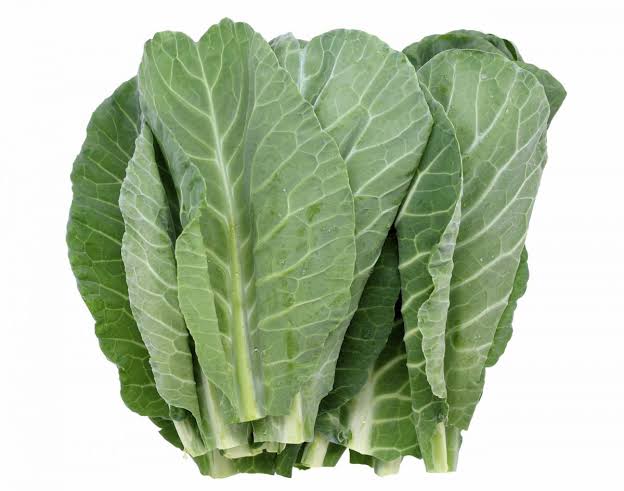
Brazilian kale is small to medium in size, growing on heads averaging 30-45 centimeters in height, and consists of broad, flat, and rounded leaves. The wide, dark green leaves have frilly, serrated edges and prominent white veins span across the center of the leaves. The leaves are also connected to fleshy, fibrous, light green stems that are short, thick, and strong. Brazilian kale is crisp and tender with a bitter-sweet, green taste that is reminiscent of the flavor of cabbage.
2. Curly/Scots Kale

Curly kale or Scots kale is a common type of kale that you will find nearly in all grocery stores. It has dark green and tightly wound curly leaves and a hard, fibrous stem. This variety of kale tends to have a bright, peppery flavor that can become quite bitter.
The fully mature leaves may be steamed, braised, stewed, fried, sautéed, and even baked like a chip. They are great in hardy soups which contain smoked meats, potatoes, beans or barley. Other flavor affinities include, bay leaf, oregano, thyme, red pepper flake, nutmeg, shallots, onion, tomato, sweet potatoes, cheddar cheese, Parmesan, cream, roasted meats, chorizo sausage, pancetta and chicken.
Also Read: Giant Pumpkin Facts And Ideal Growing Condition
3. Lacinato Kale

Lacinato kale grows 2 to 3 feet) tall and has dark blue-green leaves with an “embossed texture”; its taste is described as “slightly sweeter and more delicate than curly kale.”The lacinato variety is sometimes called dinosaur kale because its bumpy leaves may resemble what dinosaur skin looked like, and perhaps because the unique appearance of the leaves is evocative of primordial flora. Because of its taste, “slightly bitter and earthy”, it has been called “the darling of the culinary world”
It is also known as Tuscan kale, Italian kale, dinosaur kale, kale, flat back kale, palm tree kale, or black Tuscan palm.
4. White Kale
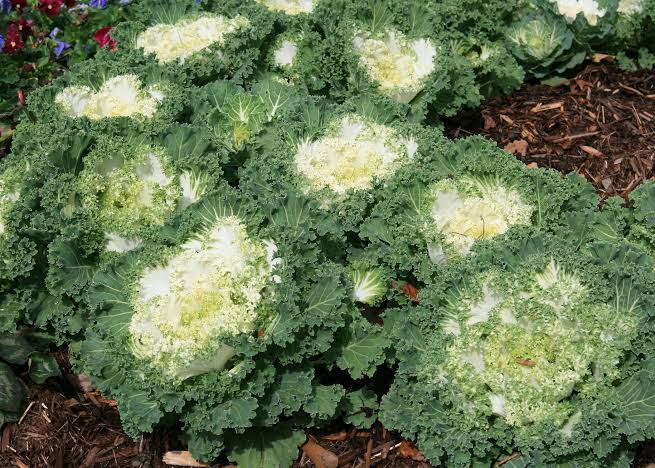
White kale is a short compact plant that produces contrasting white midribs within its frilly green leaves. The central leaves of the plant’s rosette become completely white when fully mature, giving it a “flower-like” look. White kale is rather strong flavored with a chewy texture. Its taste is reminiscent of cabbage with a robust earthy finish. Once cooked, White kale’s texture softens and its flavor becomes sweet and nutty.
5. Red Russian Kale

Red Russian kale grows in a large loose rosette shape that ranges from .3-.5 meters tall. This variety is easily recognized by its richly colored burgundy stems and purple tinted leaves. They are flat and toothed like an oak leaf with an overall dark green color and deep red veins. Red Russian kale offers a mild nutty flavor that is slightly sweet and earthy with a hearty texture. When choosing Red Russian kale look for fresh, bright, firm leaves.
6. Siberian Kale

Siberian kale has hardy white stems that run from the base of the root through the leaves. The leaves of Siberian kale are large and flat with edges that have a ruffled shape. Leaves have a delicate texture and are bluish green in color.
This kale variety is exceptionally tender and offers a mild cabbage-like flavor. Their texture is much more delicate and flavor mild when compared to that of the more well-known European (Oleracea) varieties of kale. Similar to carrots and other root vegetables Siberian kale will develop a sweeter flavor as the temperature drops and after exposure to frost.
Also Read: Difference Types of Edible Mushrooms
7. Ornamental/Flowering Kale
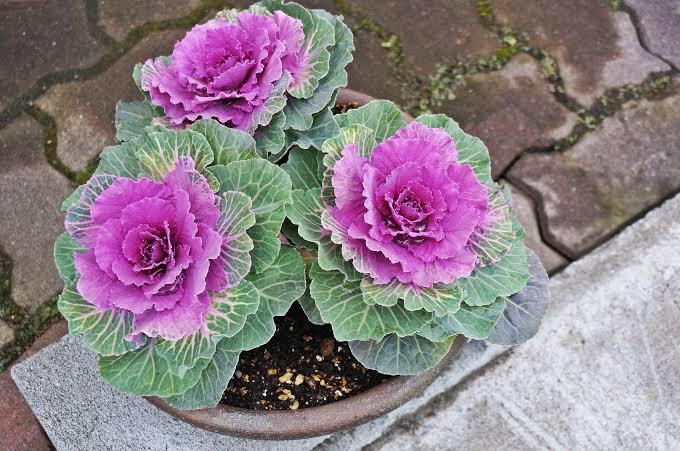
With its ruffled leaves drenched in pinks, purples, and reds, flowering kale is a decorative and easy-to-grow addition to container gardens and garden beds. Also called ornamental cabbage, flowering kale is in the same plant family as edible cabbage, cauliflower, and broccoli. Flowering kale is edible, but a bitter flavor means leaves are usually reserved as culinary garnishes, not as food.
Flowering kale grows best in sunny locations and moist, rich soil. It will tolerate light shade but develops richer color in full sun. When planting flowering kale, sink the plant into the ground so the lower leaves are flush with the soil surface.
8. Chinese Kale/Gai Lan
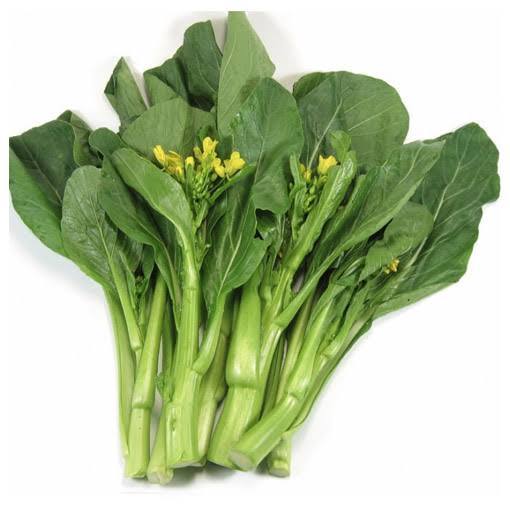
Chinese kale is a vegetable crop that originated from China. It is also known as Chinese broccoli, Kailan, or Gai-lan. Similar to traditional sprouting broccoli, this oriental vegetable has tender edible stems, leaves, buds and flowers. It is a fast-growing crop that is a great source of antioxidants and vitamin C.
Young leaves, stems and flower head bolts are widely used in Chinese cuisines, usually as a stir-fry dish. It is also cooked in soups, steamed, or eaten as fresh greens. Chinese kale can be slightly bitter, but generally has a sweeter and nuttier taste than common broccoli.
9. Redbor Kale
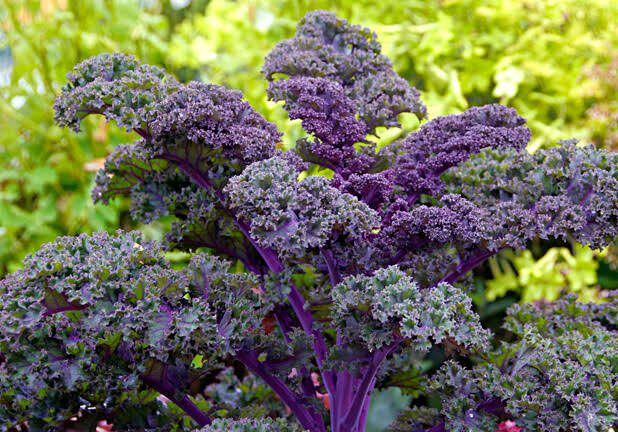
Redbor kale can be distinguished from other kale varieties simply by its deep red and maroon color. The Redbor kale has frilly, curled leaves that have deep purple stems and veins running throughout. Some plants are entirely magenta, thought at times, others may have leaves that are tinged with green.
Growing between 18 to 24 inches in length, the Redbor kale offers a mild cabbage-like flavor and crisp texture. When cooked it becomes tender and nutty with a mild earthy sweetness.
10. Sea Kale
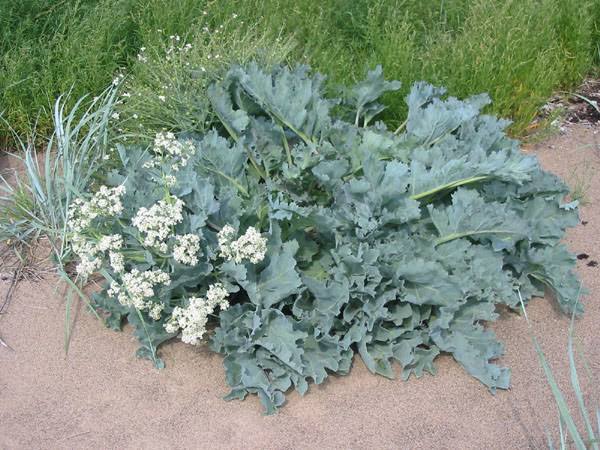
Sea kale plants grow large in size and form clumps of spreading leaves, averaging sixty centimeters in diameter and seventy-five centimeters in height. The silver-grey, deeply lobed leaves grow in a rosette pattern and have fleshy waved-edges with a velvety texture.
Sea kale also bears many small, fragrant, four-petaled white flowers and globular, pea-sized green pods containing one edible, light green seed inside. In addition to the leaves, pods, and flowers, the leafstalks connect to an extensive underground root system that can grow to be firm, starchy, and thick. Sea kale is crisp and chewy with a bitter, green, and slightly nutty taste.
Also Read: Difference Types of Pineapples
11. Baby Kale
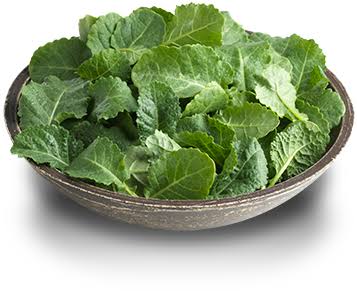
Baby kale is simply the term for the delicate leaves of a young, immature kale plant. Almost any kale variety can be harvested at this young stage when the leaves are more mild and tender, though still hardier than most lettuce varieties. Both the petite stems and leaves of Baby kales are edible, with a chewy yet succulent texture and a slightly peppery flavor, similar to arugula.
12. Premier Kale

Premier kale leaves are medium green, smooth with scalloped edges. The midribs and stems are white and tender. It is popular among market growers for bunching at 4-5″, baby leaf and microgreens.
The tender young leaves can be eaten raw in salads, prepared in soup such as minestrone and ribollita, added with pasta, boiled, sautéed, or baked as kale chips. The broad mature leaves are deribbed and usually blanched first, and then sautéed with other, flavorful ingredients such as anchovies.
13. Walking Stick Kale

Walking stick kale is also known as Jersey kale and walking stick cabbage, generally grows to a height of 8 to 10 feet, but it can reach 18 to 20 feet. The tuft of leaves at the top make the plants top heavy, and, if not staked, the stalks tend to bend over, creating a naturally-grown cane handle at the root end. Their dense, fibrous stalks take to sanding and varnishing well after they dry, and they make sturdy walking sticks.
Walking Stick has a chewy texture and a very robust cabbage flavor, especially when eaten raw. When blanched in water the flavor slightly mellows, but the fibrous stems remain tough and should be removed.
Also Read: Different Types of Cassava
14. Tronchuda /Portuguese Kale
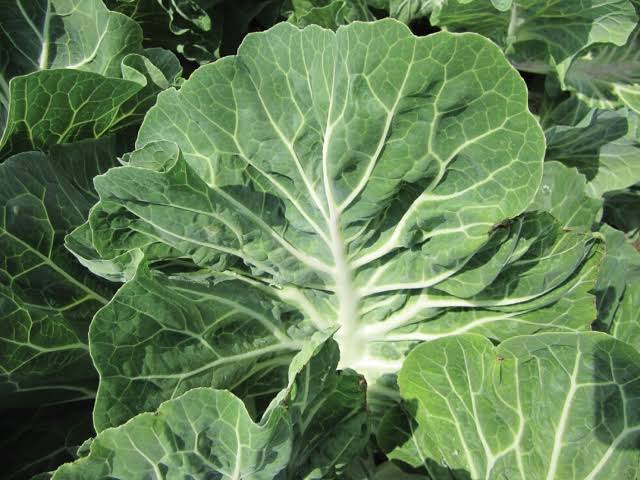
Portuguese kale has tender, sweet leaves that are increasingly popular in stir-fries and soups. Typically, the kale often grows up to 2 feet tall. Although it is cold hardy like other kale varieties, it is more heat tolerant than other types of kale.
Native to Portugal, this loose-headed member of the cabbage family resembles Swiss chard, with its large, blue-green oval leaves and thick white ribs. In other words, the leaves look like large collard leaves but with many white veins. Also known as Tronchuda Beira kale, it is easy to grow and has a milder flavor than other cabbage crops.
15. Black Magic Kale

Large palm tree-like fronds are a characteristic of Black magic kale. They grow from a sturdy central stalk, and are smallest at the top gradually growing in size towards the base. The crinkly leaves are deeply veined and a dark greenish-purple, almost black color.
With a blade-like shape, Black kale leaves are narrower than most other varieties and have a thin tender stem. The chewy texture easily softens when cooked, and offers subtle green cabbage flavor that has a tangy bite with a sweet earthy finish. Cold-hardy and visually striking, Black Magic is a favorite for both culinary and ornamental use, adding depth to dishes and gardens.
16. Purple Kale

Purple kale produces serrated and ruffled vibrant purple leaves that are variegated in shades of dusty green. This attractive vegetable offers a very robust cabbage flavor more intense than that of green or black kale. Its leaves have a chewy semi-crisp texture that softens with cooking, but the fibrous stems remain tough and should be removed.
Dwarf Blue Curled Kale
This compact variety features tightly curled, blue-green leaves with a robust, slightly bitter taste. Its smaller size makes it ideal for container gardening or small spaces, and it’s a great choice for salads, kale chips, or roasting. Dwarf Blue Curled kale is cold-hardy and maintains its texture well when cooked, making it a versatile option for home cooks and gardeners alike.
Scarlet Kale
Scarlet kale is a stunning variety with deep purple, curly leaves and vibrant red stems that deepen in cold weather. Its mild, slightly sweet flavor works well in salads, garnishes, or light cooking, though it’s often grown ornamentally. Scarlet kale’s bold color elevates dishes visually, and its tender leaves make it approachable for raw recipes.
Toscano Kale
Toscano kale, synonymous with lacinato, has dark green, puckered, strap-like leaves with a nutty, slightly sweet flavor. It’s a staple in Italian recipes, shining in raw salads or cooked dishes like minestrone. This heirloom’s tender yet sturdy leaves make it a versatile choice, and its rich flavor pairs well with bold ingredients like garlic or lemon.
Beira Kale
Beira kale, similar to Tronchuda, features large, paddle-shaped, blue-green leaves with a mild, cabbage-like flavor. It’s a favorite in Portuguese soups or steamed dishes, offering a juicy, succulent texture. Heat-tolerant compared to other kales, Beira is a great choice for warmer climates, with leaves and stems that soften nicely when cooked.
Westland Winter Kale
Westland Winter kale is a Dutch heirloom with dark blue-green, curly leaves and a rich, earthy flavor. Perfect for hearty dishes like stews or roasted sides, it thrives in cold weather, with frost enhancing its sweetness. Its thick leaves make it ideal for cooking, and its reliability in winter gardens makes it a staple for seasonal harvests.
Fizz Kale
Fizz kale is a hybrid variety with finely fringed, bright green leaves that resemble curly kale but with a softer, lacinated texture. Its mild, slightly peppery flavor makes it perfect for raw salads, smoothies, or lightly steamed dishes. Fizz’s tender leaves and compact growth habit suit container gardening, and its versatility appeals to cooks seeking a less bitter kale for fresh or lightly cooked preparations.
Ripbor Kale
Ripbor kale, a curly variety, has dark green, tightly ruffled leaves with a robust, slightly bitter taste. Its sturdy texture holds up well in soups, casseroles, or kale chips, making it a winter favorite. Ripbor’s cold tolerance and long harvest period suit gardeners in harsh climates, and its bold flavor pairs well with rich ingredients like olive oil or bacon.
Pentland Brig Kale
Pentland Brig kale, a Scottish heirloom, features broad, dark green, slightly wavy leaves with a sweet, tender flavor. Ideal for soups, steaming, or raw salads, it’s prized for its cold tolerance and post-frost sweetness. This variety’s robust yet soft leaves make it a reliable choice for traditional British dishes and winter gardening.
Prizm Kale
Prizm kale is a compact, award-winning variety with short, ruffled, bright green leaves and thin, edible stems. Its mild, tender flavor is excellent for raw salads, smoothies, or as baby greens. Easy to grow in containers or gardens, Prizm’s fast growth and soft texture make it a favorite for home cooks seeking a less fibrous kale for quick, fresh dishes.
Further References
- Facts About Kale: https://en.m.wikipedia.org/wiki/Kale
- Health Benefits of Kale: https://www.healthline.com/nutrition/10-proven-benefits-of-kale
- Benefits of Kale: https://www.hsph.harvard.edu/nutritionsource/food-features/kale/
- Nutritional Facts: https://www.livescience.com/50818-kale-nutrition.html
- Types of Kale: https://www.igra-world.com/types-of-kale/